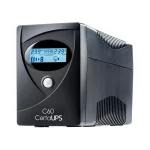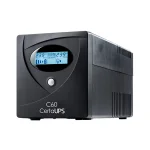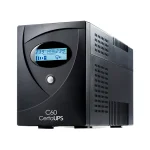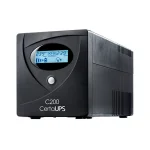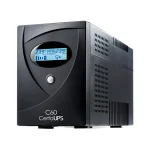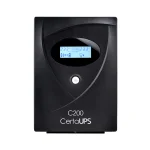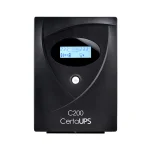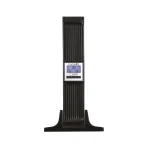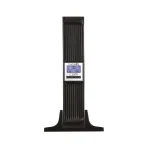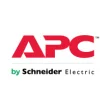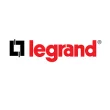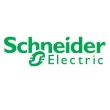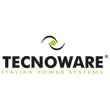Edge computing pushes data processing nearest to the device that needs the information to operate, rather than pushing the data back to a centralised datacentre. Edge computing is essentially a de-centralised approach. In terms of power protection to ensure resilience in an entire decentralised eco-system it is important to protect both the servers within the cloud datacentre and each data-processing point along the Edge computing network. Larger three phase UPS systems may be required for datacentres with far smaller uninterruptible power supplies required for small load servers, PCs and Internet of Things (IoT) devices.
Uninterruptible Power Supplies (UPS) Systems
Power protection like cooling is one of the most critical infrastructure decisions you can make for your server room or datacentre. Server Room Environments supplies a wide range of power protection solutions and can supply a one-off UPS system or design, install and commission a compete power protection package including the uninterruptible power supply, power distribution units, server room battery backup systems and standby power generator. We also provide a complete 24/7 UPS maintenance and support service with a range of UPS maintenance contracts, emergency call-out and preventative maintenance visits.
- UPS Systems (599)
- UPS Solutions (600)
- UPS Technologies (584)
- Power Distribution (252)
- Backup Power (458)
What is a UPS System?
A UPS system is a backup power solution that uses energy stored in a set of batteries to power the inverter section when the mains power supply section. The inverter converts the DC (direct current) power from the battery set into a digitally generated AC (alternating current) waveform. Backup power solutions can also provide protection from mains borne power problems including sags, surges, transients, spikes, and brownout conditions. The wider the input voltage window to the UPS system, the less the UPS battery must be used to support the connected loads.
UPS Product Solutions
There are three types of UPS system: on-line, line interactive and off-line/standby. An on-line uninterruptible power supply provides the ultimate power protection. The inverter is continuously running and powers the load from either a rectified mains power supply or the battery set. An on-line UPS system also has a built-in automatic bypass. If the UPS is overloaded or has an internal fault condition, the bypass automatically transfers the connected load to the mains power supply (if present). As the inverter is continuously powering the load (under normal operating conditions), there is no-break in electrical supply to the connected loads and the source of power is uninterruptible. Monoblock and modular UPS are types of online UPS. Both are scalable and can be operated in parallel/redundant N+X configurations.
Line interactive UPS systems provide intermediate power protection. When mains power is present, the uninterruptible power supply supports the load via a built-in automatic voltage regulator (AVR). An AVR can have a wide input voltage window and may be electronic or electro-mechanical. If the input mains power supply voltage and frequency are within the input voltage window parameters, the AVR will buck or boost the incoming power supply voltage and provide a regulated supply to the load. A filtering circuit provides protection from spikes and transient voltages. If the mains power supply fluctuates (voltage or frequency) outside the input window specification, an AC inverter is connected and provides power to the load. There is a brief change in the output supply lasting typically 2-4ms as the transfer takes place and this is within the electrical storage capacitance of a switch mode power supply (SMPS) within computers, servers, and other electronic devices. A line interactive does not have a built-in automatic bypass and the inverter output waveform will be either a sinewave or square wave.
A standby or off-line UPS system provides basic power protection. The UPS has an inverter which will provide a square-wave or step-wave output waveform when the mains power supply fails. An offline UPS will have a basic EMC filtering circuit for spikes and electrical noise and an input-connected voltage stabiliser. There is a break when the inverter is switched into circuit and this gives rise to the term ‘off-line’.
Single and Three Phase Power Solutions
Online UPS systems are available for single phase and three phase applications. Typical configurations include 1/1 (single phase input and output), 3/1 (three phase input and single-phase output) and 3/3 (3-phase input and output). Line interactive and offline/standby UPS systems are single phase (1/1).
UPS Sizing in kVA and KW
VA stands for Volts x Amps and measures the ‘Apparent Power’ of the UPS system. Watts (W) measures the real power available from the UPS. kVA and kW are the respective terms measure in units of 1000 (k) where 1kVA = 1000VA and 1kW = 1000W.
Double conversion online UPS tend to start in rating from 500VA up to several hundred kVA and even MW (Mega-Watt) sized applications. Online UPS are available to cover any size application from small computers to telecoms, IT servers, server room, data centre and industrial manufacturing site applications.
Line interactive UPS systems run from less than 500VA to 10kVA in size and can be used to protect IT loads but with the proviso that they do not include an automatic bypass switch for overload and fault conditions. Standby UPS systems tend to run up to 2kVA and as they only provide budget power protection should be used for less critical application or where the budget will not stretch to a line interactive or online UPS system.
UPS Battery Types
A UPS battery set consists of a set of battery blocks arrange into a single or multiple battery strings. A typical battery block is rated 50Ah 12Vdc. If the inverter section requires a 60Vdc input voltage, then 5 × 12Vdc battery blocks are required in a single string of batteries where 5×12=60. Battery strings can be connected in parallel to provide the Ampere-hour required to support the load and provide the runtime required. For example, 2×50Ah battery strings = 100Ah.
UPS batteries may be valve regulated lead acid (VRLA) maintenance free or a lithium-ion based. The most used battery is a lead acid due to its cost. Lithium-ion batteries have a 20-30% premium to their manufacturing costs and require more sophisticated battery management systems.
Balanced against the higher costs are other factors to consider. The typical design life of a lead acid UPS battery is 5 years or 10 years with replacement required within 3-4 and 7-8 years, respectively. A lithium-ion battery may have a 10-to-15-year design life.
Lead acid batteries require a 20-25⁰C operating ambient temperature. They are sensitive to higher temperatures and for every 1⁰C rise above 30⁰C, their design live halves. Lithium UPS batteries are more temperature tolerant and can operate above 30⁰C.
Lithium-ion UPS batteries are more suited to backup power protection projects where there is a need for a rapid cycling of the battery and fast recharge. A lead acid battery will take 24hours to recharge to 80%. In comparison a lithium-ion battery can recharge within 1-2 hours to full capacity.
Other forms of energy storage that can be used to power the DC input side of an AC inverter include supercapacitors, DC flywheels and fuel cells. These types of energy storage are less common in uninterruptible power supply applications due to the limited amount of power they can store (supercaps) or their cost (flywheels and fuel cells).
External Bypass Arrangements
A UPS external bypass switch allows the UPS system to be safely maintained during a preventative maintenance visit or swapped out without disruption to the connected load. The bypass switch is typically wall mounted and uses circuit-breakers or a rotary switch to transfer the load to the raw mains power supply. Volt-free contacts can be built-into the bypass for status reporting purposes and Castel interlocks configurations are available. For rack mount UPS, bypasses are available for rackmount bypasses can be used that can be installed into a server cabinet.
UPS Maintenance Contracts
A UPS system has consumable parts and forms part of the critical power path. The device should be regularly inspected and maintained at least once per year. This is known as a preventative maintenance visit. A UPS maintenance contract will also include an emergency response time (within 8 working hours, 12 working hours or 4 clock hours) and provide technical support. Labour and parts charges may be extra or included in the UPS maintenance plan price.
The consumable parts in a UPS system include the batteries, fans, and capacitors. Fans and capacitors will typically require replacement in years 8-10 as part of a complete UPS refurbishment. The costs for this need to be viewed against a complete replacement of the UPS.
UPS battery testing should form part of an annual preventative maintenance inspection. For this a hand-held battery testing device us use dto test each individual battery block and the results recorded and compared to previous readings. The results will show which battery blocks may be deteriorating faster than their expected working life and require replacmement. For a well maintained battery environment, regular battery testing can also help to extend the life of a battery set by running a healthy battery set for longer than the expected working life.
For more information on our UPS systems or to arrange a site survey, please contact our projects team. We provide a a complete range of single and three phase UPS systems including rack mount and modular solutions to protect mission critical servers and data centers.

Earn SRE points on all online purchases with double points on selected products





























